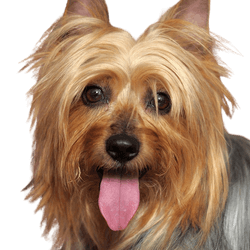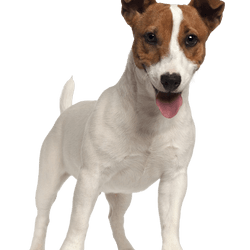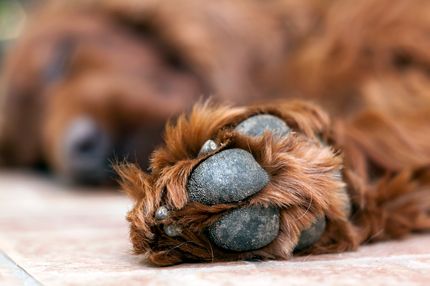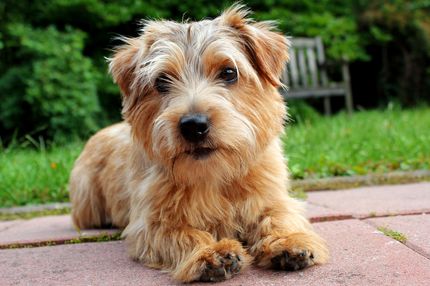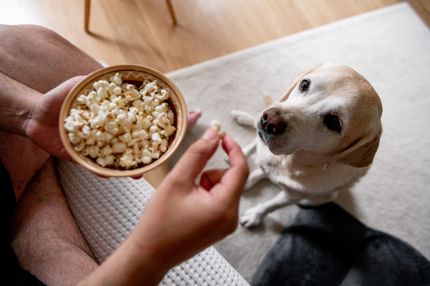Facts & Origin
Silky Jack - The lively fusion of Jack Russell Terrier and Australian Silky Terrier.
The Silky Jack is a charming blend of the Jack Russell Terrier and the Australian Silky Terrier. Both parent breeds have interesting origins and diverse histories. This combination creates a unique dog that combines the best qualities of both breeds.
Suitability and attitude
The Silky Jack is well suited for a variety of living situations. Here are some areas where he can excel:
- Active families: the Silky Jack is an ideal companion for active families who enjoy spending time outdoors and are willing to give him plenty of exercise and mental stimulation.
- Dog Sports: With his intelligence and energy, the Silky Jack is well suited for various dog sports such as agility, flyball and obedience training.
- Apartment Keeping: Due to its relatively small size, the Silky Jack can be kept indoors, provided it is given enough exercise and mental challenges.
| Alternate Name | - |
| Origin | Australia - England |
| Life expectancy | 12 - 16 years |
| Care requirements | high-maintenance - low-maintenance |
| Activity level | average - high |
| FCI group | not recognised |
| AKC group | not recognised |
| KC group | not recognised |
More Australian Silky Terrier mixes
More Jack Russell Terrier mixes
Attitude, character and temperament of the breed
Possible character traits of the Silky Jack
The Silky Jack often inherits the spirited and lively character traits of both parent breeds. Here are some traits he might likely have:
- Active and playful: The Silky Jack is a lively and energetic dog that loves to play and be active. He loves to be outside and participate in fun activities.
- Intelligent and Alert: With the combination of Jack Russell Terrier and Australian Silky Terrier, the Silky Jack is intelligent and alert. He is quick to learn new commands and responds well to situations.
- Social and Friendly: The Silky Jack usually shows a friendly and sociable nature. He gets along well with people and other animals if properly socialized from a young age.
- Hunting Instinct: Because of its ancestry from the Jack Russell Terrier, the Silky Jack may have a strong hunting instinct. It is important to provide him with proper training and employment to channel this behavior.
The Silky Jack is a lively, intelligent and friendly dog that combines the best of the Jack Russell Terrier and the Australian Silky Terrier. With its attractive appearance and energetic nature, it is a great addition to active families and dog lovers. With proper care, training and loving attention, the Silky Jack will become a loyal and fun-loving companion.
Character
Health and care
The Silky Jack is generally a robust and healthy dog, but it may have certain genetic health problems that are known to occur in the parent breeds. Regular veterinary examinations, a balanced diet and proper grooming are important to ensure its health. Here are some aspects of grooming that should be considered:
- Coat Care: The Silky Jack's silky coat requires regular brushing to prevent matting and keep the coat healthy and shiny.
- Dental Hygiene: Regular dental care is important to prevent dental problems. Daily tooth brushing and regular check-ups with the veterinarian are recommended.
- Exercise and mental stimulation: The Silky Jack needs daily exercise and mental challenges to regulate his energy level and be happy. Walks, games and interactive toys can help him do this.
What does this mixed breed look like?
The Silky Jack usually has an appealing appearance that has characteristics of both parent breeds. Here are some typical characteristics he might be likely to have:
- Size: the Silky Jack is usually small to medium in size and has a compact build.
- Coat: The coat is often dense, silky and of medium length. It may be a variety of colors and patterns, including white, brown, black, or a combination thereof.
- Build: The Silky Jack has an athletic build with well developed muscles and an alert expression.
| Fur length | long - short |
| Fur | flat coated - rough-haired |
| Ear shape | Standing Ears - Tilt-ear |
| Tail | short - lang |
| Anatomy | slim, sporty |
| Size ♀ | 23 - 38 cm |
| Weight ♀ | 3 - 8 kg |
| Size ♂ | 23 - 38 cm |
| Weight ♂ | 3 - 9 kg |
| Suitable For | - |
Known Diseases
Cataract
Cataracts are still one of the most common causes of blindness, even in dogs.
Dermatophytosis
Dermatophytosis (synonym dermatophytosis, from ancient Greek τὸ δέρμα derma, German 'skin' and ancient Greek φυτόν phyton, German 'plant') or tinea (Latin for 'woodworm', 'moth') is a skin fungal disease caused by specific fungi (dermatophytes).
Ureteral ectopy
Ureteral ectopy (also known as ureteral ectopia) is an inherited condition where the ureter (known as the ureter) does not end in the bladder as usual due to a misalignment.
Numbness
Often occurs in old age.
Ataxia
Ataxia (from Greek ἀταξία ataxia 'disorder' 'irregularity') is a generic term in medicine for various disorders of movement coordination. Ataxia can occur even when there is no paralysis (paresis), that is, when there is normal muscle strength.
Atopy
Canine atopic dermatitis or environmental allergy is characterized by itching with scratching, biting, and rubbing of the face, paws, and belly
extreme whiteness
May be associated with some other diseases.
Legg-Calve-Perthes
Legg-Calvé-Perthes disease (aseptic femoral head necrosis) is a growth disorder of the femoral head.
Dislocations
Lenticular and patella luxation occur in some breeds and affect the eye.
Myelopathy
Degenerative myelopathies of dogs are a series of slowly progressing neurological diseases associated with destruction of the spinal cord. These diseases are associated with slowly progressive movement disorders of the hindquarters.
FAQ
-
This hybrid breed is a dynamic and lively dog that is very affectionate. They are very intelligent, alert and good at learning commands. They can also be very affectionate.
-
This hybrid breed is usually larger than the Jack Russell Terrier and slightly smaller than the Australian Silky Terrier, usually reaching a shoulder height of about 45-55 cm.
-
This hybrid breed has an average life expectancy of 12-17 years.
-
Since this hybrid breed is a lively and energetic breed, they need a lot of exercise and exercise every day. To keep them happy and healthy, they should be exercised at least half an hour a day up to several hours a day.
-
Since these dogs are very intelligent and capable of learning, they can usually adapt well to other animals as long as they are socialized from a young age.
